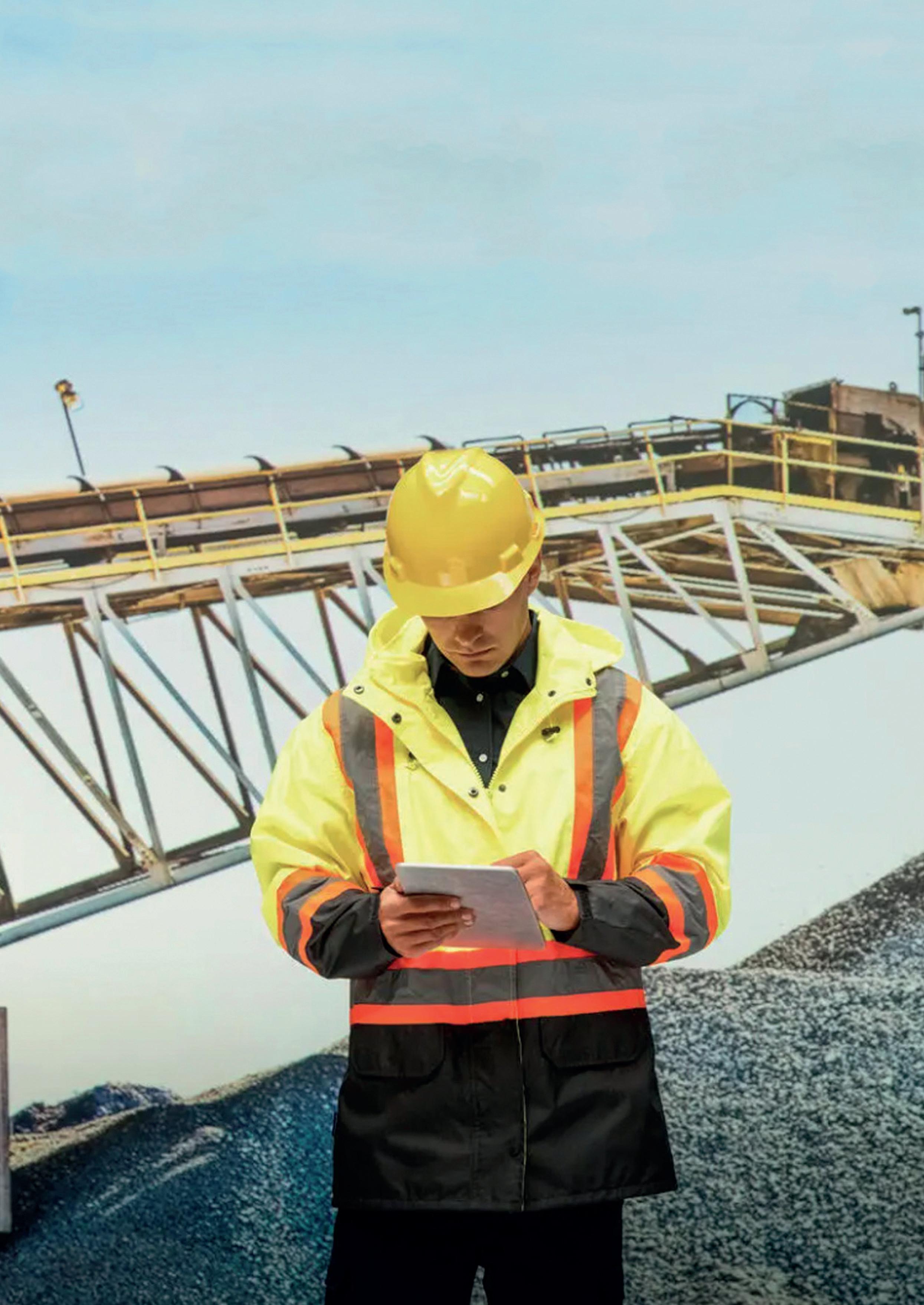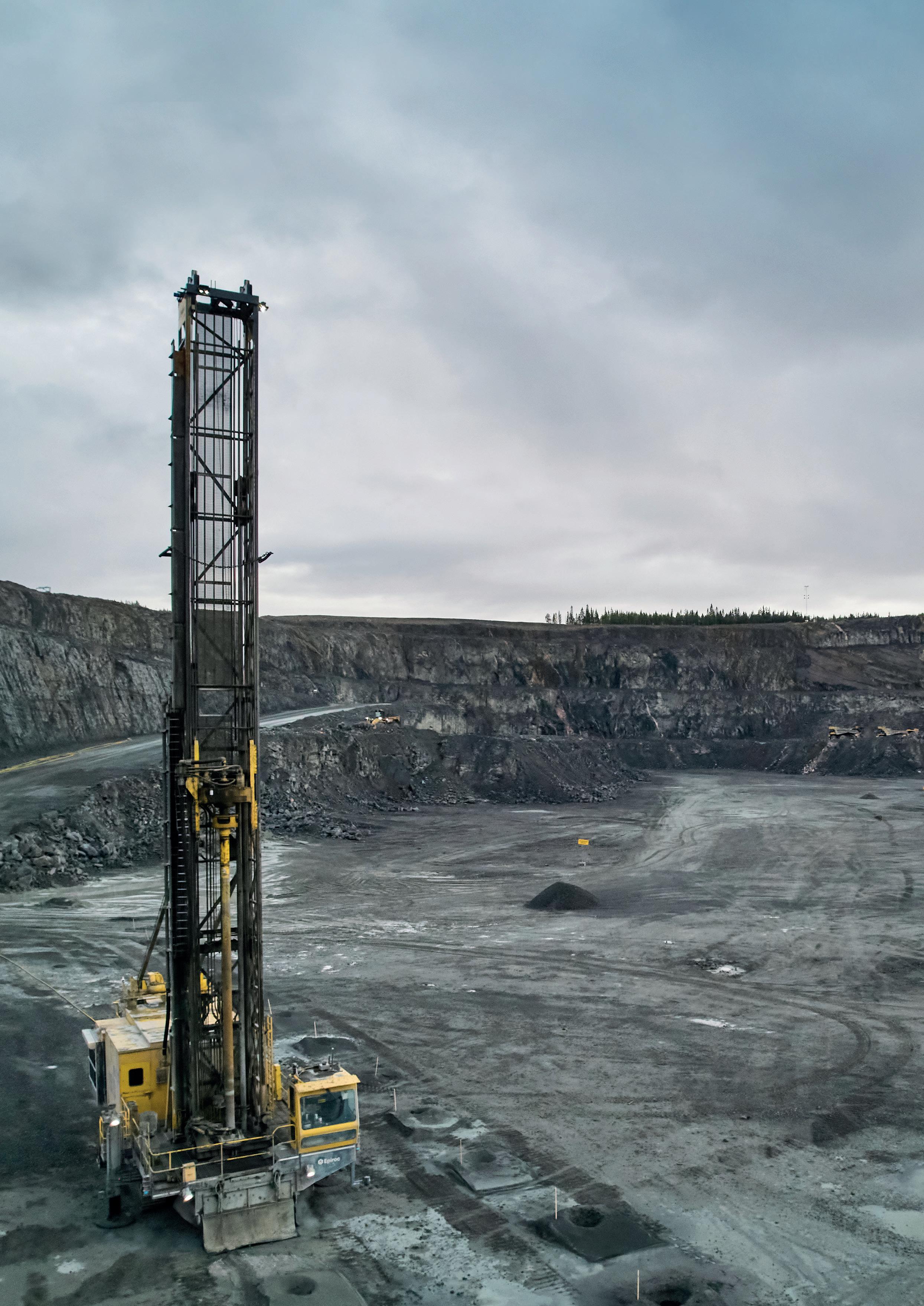
6 minute read
Unlocking Africa’s Mining Investment Potential

Boris Ivanov, Emiral Resources Ltd, UAE,
assesses the current state of the African mining industry and outlines what the future may hold with the proper investment and commitment to development.

The last two years have been bruising for the global economy, but the downturn has been felt rather acutely in Africa. With the pandemic pushing foreign debt of low-income countries to record levels, inflation spiking and rising geopolitical tensions disrupting food and commodity prices, several countries in Africa are struggling. For example, Ghana, Kenya, Egypt, Zambia, Zimbabwe, and Tunisia are all lumbered with high levels of debt; Ghana, in particular, is currently negotiating an IMF bailout. There is a risk of accelerating and deepening poverty as a result of political and economic uncertainty. Flying the flag for recovery will be certain key factors, led by the boom in commodities this year and demand for rare earth metals (of which Africa has in abundance), an increasing amount of digitisation in the goods and services market and rising investment in infrastructure, all combining to drive the region forward. Rich in both natural and mineral resources, Africa is well positioned to drive long-term, sustainable economic growth for years to come. According to the United Nations, Africa is home to about 30% of the world’s mineral reserves, 12% of the world’s oil, and 8% of the world’s natural gas reserves. Mining is still one of the continent’s most important economic drivers, contributing to foreign exchange earnings, government revenue, employment, and almost 10% of the national GDP.
With the energy transition triggering an increase in demand for mineral resources, Africa could scale up investment in key sectors. Countries such as The Democratic Republic of Congo, Zimbabwe, Zambia, Namibia, and South Africa (which are rich in cobalt, nickel, copper, and lithium), Guinea (bauxite and iron ore), and Mauritania (copper) are all looking to maximise opportunities. These countries are receiving growing focus from international mining companies and attracting growing investment. However, it is vital that African countries get a few key things right to maximise the potential of their mineral resources.
While there have been many improvements in Africa’s mining sector, the industry is still battling several challenges. Unrest and poor performance of state-run mining infrastructure has negatively impacted the sector’s operational stability and attractiveness. There are also worries around policy and regulatory decisions coupled with socio-economic issues, which is creating a difficult operating environment.
One of the biggest challenges is the low base of mining activity and the relatively lower level of industrialisation in the industry. Africa is amongst the most mineral-rich areas in the world, but the continent’s potential continues to be under-explored. Until a few years ago, expenditure on mineral exploration in Africa had not moved past the US$5/km2 mark. This is particularly interesting since, the average expenditure in Latin America, Australia, and Canada has been hovering around the US$65 mark. Another reason for the struggle could be pegged to the higher degree of dependency that African countries place on production of fewer metals and mineral products, with over 20 countries out of the 54 on the continent relying on the export of metals to generate around three quarters of their earnings.
While the pandemic has exacted a heavy toll on economies and has certainly left its legacy, some African governments have been further hamstrung by poor governance, political instability, insufficient development of health and educational systems, and uneven access to digital services. A string of coups across Africa has further slackened growth, and conflict continues to simmer in Burkina Faso, Mali, Ethiopia, and the wider Sahel region. This has hampered mining activities.
Another quite general, if not omnipresent challenge is the lack of infrastructure – some countries are better than others, but all over Africa there is a distinct lack of energy (and mining and mineral processing are energy intensive industries), and road and rail availability. Infrastructural challenges severely impede efficient exploitation of even discovered resources. The mining industry alone is ill-positioned to solve these issues; constructing hundreds and sometimes thousands of kilometres of highways to link resources to processors or ports, or building power-plants, are tasks beyond the cost of a stand-alone mineral project.
This situation is a bit of a ‘catch 22’ scenario – to improve the transportation network and increase energy generation, governments need to step in, and they need funds to do so. The funds could come primarily from taxing the resource industry; however, it cannot currently develop enough to yield income flows in necessary volumes. This is where international development efforts could be useful and contribute to infrastructure creation.
There are also significant environmental, social, and governance hurdles that have hobbled mining’s growth and development. Mining has often been tied in with deforestation, air pollution, and the exploitation of local communities. An under-developed policy framework has also worked against the full realisation of Africa’s mining potential, with inconsistent policy frameworks across the continent creating bottlenecks to exploration, geopolitical uncertainty often turning away major international players, and an unstable fiscal regime in relation to minerals often holding the sector back.
To attract investment appetite, major fiscal and regulatory reforms are required – especially in relation to mining codes, taxes, and royalties. Balanced regulatory frameworks, as well as strong institutions and stable mining codes, reassure investors that the rule of law and property rights will be respected once they invest.
A country’s fiscal regime must also be transparent and stable. Tax certainty and tax transparency will assume increasing importance in the time to come. It is integral that governments maintain consistency in legislation around mining and tax requirements. At the same time, it is essential that mining companies highlight their financial contributions to local communities through tax and the resulting improvements that these funds bring. Equally, investment in the right skills, infrastructure, energy, and water needs in general can create a supportive environment for exploration, mine development, and production.
Large scale adoption of sustainable mining operations, fast-tracking development of key infrastructure projects, and faster industrialisation in the mineral sector are also factors that boost investment attractiveness. In case of the latter, there has been significant uptake of digital solutions including process-specific dashboards, remote process management platforms, and expansions in digital safety portfolios.
Attracting investment is vital for the legitimacy of African governments who are keen to boost employment and improve living standards – especially with current global economic problems. At Mining Indaba, in May 2022, several African leaders outlined their vision for their country’s vital mining sector to the international investment community. Promises of transparent and fair regulatory regimes were announced, creating a hopeful scenario for change.
Conclusion
In a year of doom and gloom, mining and exploration companies need to be agile and flexible and African governments need to strike a balance of delivering the value and benefits of the mineral back to its people, while creating an operating environment that is attractive to investors. This will drive further growth and support a freer, safer, greener, and more prosperous Africa for all.
References:
1. ‘Our work in Africa’, UN Environment Programme, www.unep.org/ regions/africa/our-work-africa










